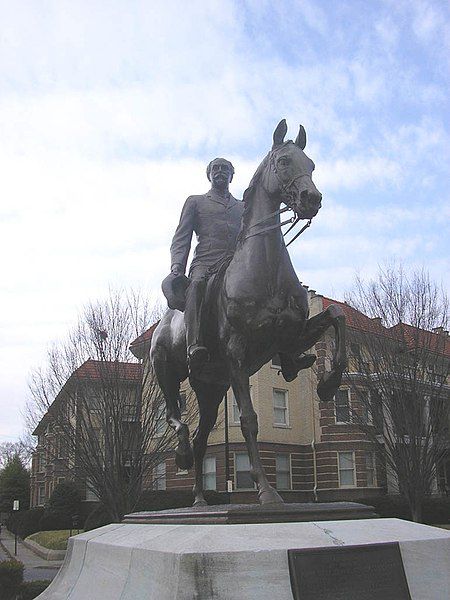There’s a new art organization in town, and they’re addressing controversy head-on. The Friends of Louisville Public Art, or FOLPA, has announced its formation May 30 following the repeated vandalism of the John B. Castleman statue located in Louisville’s Cherokee Triangle neighborhood.
The statue, erected in 1913, is interpreted by many Louisvillians as a Confederate monument and has been vandalized at least five times since 2017. The Louisville Metro Landmarks Commission voted on May 9 to remove the statue from Cherokee Triangle and relocate it to Castleman’s gravesite in Cave Hill Cemetery. This decision will become final unless it is appealed within 30 days.
That’s where the Friends of Louisville Public Art comes in.
The organization views public art as an opportunity to experience history free of charge outside of a museum or book. In their official statement, FOLPA cites various Louisville landmarks they are interested in protecting such as Hogan’s Fountain in Cherokee Park, the King Louis XVI statue downtown, and the Lincoln sculpture on the waterfront, among others.
Steve Wiser and a few Louisville citizens established this group in response to the Castleman statue, but they have outlined three specific goals for their organization. These goals aim to honor public art through 1) accurate historical data, 2) restoration, and 3) input into the status of future public art decisions. The group hopes to protect civic art and its contextual integrity.
FOLPA claims that artwork is no longer judged by its historical and artistic context but rather by modern standards. This contemporary judgment may label art as politically incorrect. That's what happened with the Castleman statue. Castleman’s three years in the Confederate Army prompted many to consider his statue a Confederate monument and to subsequently call for its removal.
FOLPA believes this disregards and overshadows what they consider to be Castleman’s many achievements. According to FOLPA, the statue’s only reference to the military lies in the plaque that notes his years of military service. In their defense of the sculpture, FOLPA alludes to Castleman’s roles as the first Olmsted Parks president, the founder of the Saddlebred Horse Association, an active local military member, an advocate for integration of Olmsted Parks, and the Brigadier General of the United States Army.
“Sculptures that represent hate and violence, such as the Confederate and George Prentice monuments should certainly be removed,” explains FOLPA’s official statement distributed to the media. However, FOLPA believes the Castleman statue does not represent either of these entities.
FOLPA’s plan of action includes a decision by June 6 on whether to appeal to the circuit court to try to retain the Castleman statue in its Cherokee Triangle location. In addition, FOLPA is requesting the release of the vandalization video by the Louisville Metro Police Department from the May 8-9 incident. They are offering a $1,000 reward to anyone with information that could lead to the arrest of the individuals who vandalized the statue. FOLPA also hopes to collect funds to aid in the achievement of their organization’s goals.



